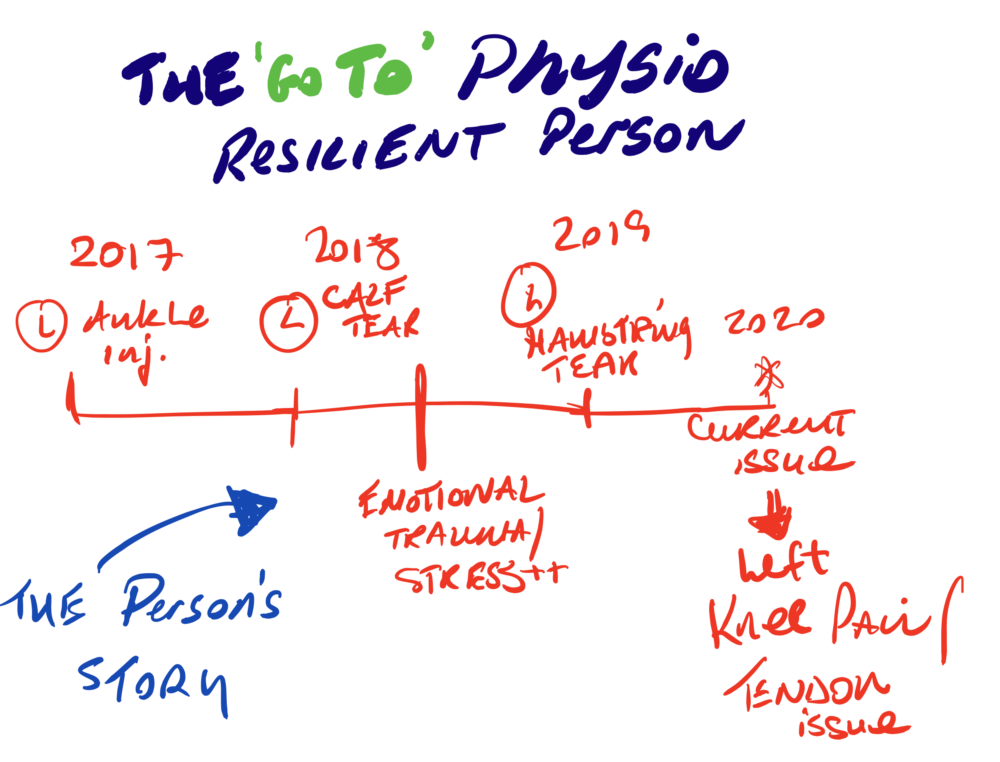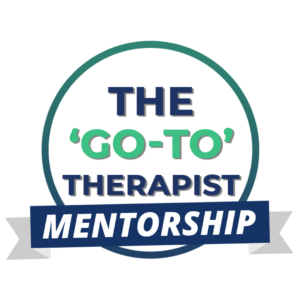Subjective Assessment – How To Truly Making Sense Of Your Patient’s Story & Have Confidence & Clarity In Your Treatment Plan
The subjective assessment is the very beginning of your patient’s journey and pillar 1 in the Go-To Therapist pillar system.
It is your chance to gather vital information on your patient’s condition but it is also the first crucial meeting of patient and therapist.
Your first job in the initial assessment is to make your patient feel at ease and comfortable. They need to get used to you, your voice, the environment and many other things.
Asking them some simple questions about the immediate past such as ‘Did you find us OK?’ to start with is a great way to get them used to listening to your voice and answering questions.
I then like to set the scene in the initial assessment to tell the patient exactly what they can expect in this session. This will hopefully put them further at ease and eliminate the ‘fear of the unknown’ which can be very real for some patients.
This also creates authority for you in that you are leading/guiding the session and all future sessions.
Once you’ve got the patient settled, the biggest mistake I see being made is to focus all yours and your patient’s attention on their ‘pain’.
All questions are usually about the pain: scoring the pain, getting the pain’s 24-hour pattern etc., etc. Instead, forget about that and imagine you had 10 minutes to get to know this person and actively listen to them with interest about how their story and how this pain is affecting THEIR LIFE.
Now the person’s attention (and yours) is all on them and it is about them rather than the pain.
You are listening for clues and genuinely trying to make sense from their story as to why this pain experience is present in the first place.
There will ALWAYS be a reason for someone’s pain or trauma to a tissue such as a hamstring tear or back pain. And, from my experience with non-traumatic injuries, it is NEVER ‘just because the tissue was weak’.
Ultimately it was the tissue’s capacity to tolerate load that was exceeded that eventually led to this trauma.
BUT WHY?
It is your job as a therapist to make sense of the story and find the ‘true stressors’ that caused the tissue to exceed its capacity in the first place.
The answer will always lie in the story and can be found from a combination of the following three stressors using the ‘Stressor and Story Method’:
- Physical Stressors (Previous injuries and motor adaptations to pain or noxious stimuli)
- Emotional Stressors (Motor adaptations in the musculoskeletal system as a result of a sensitised respiratory system among other adaptations)
- Lifestyle Stressors (Adaptations in various systems of the body as a result of excessive stressors due to lifestyle such as sleep and diet)

Now most patients will want to talk straight away about their pain, just like most therapists but the ‘Go-To’ Therapist will want to make sense of this and be very interested in previous injuries, events and significant periods of stress prior to the pain experience becoming present.
Most patients will dismiss previous injuries away from the site of pain as irrelevant but it’s your job to find these and ask the logical question: could any of these injuries adapt/change the patient’s movement behaviour and potentially overload the area where the patient is now experiencing pain?
Obviously, it goes without saying, you must clear your red flags and special questions but the point I’m making is to get to know your patient and their story rather than just the site of pain.
This will be invaluable information in the next step when we look at the generic objective assessment and make sense of how the person’s nervous system has adapted to their story.
The final bit of information you need to elicit is where the patient wants to get back to – and don’t just accept ‘to get out of pain’ as an answer.
Having a deep understanding of the activities that add value to their life is very important as this will now direct YOUR attention on which direction the treatment plan will go in when implemented once you have made sense of how the person’s body has adapted and self-organised in response to their previous injuries and stressors.
In the ‘Go-To’ Therapist Online Mentorship, we pride ourselves on asking high-quality questions that get meaningful information that can be put to work straight away. I’d encourage you to do so too.
Once you’ve mastered your subjective assessment now it’s time to move onto the objective assessment.
For more help mastering the subjective assessment and gaining the confidence and clarity to design a treatment plan even for the most complex of cases click the link below and book a FREE 30 minute strategy call today.


